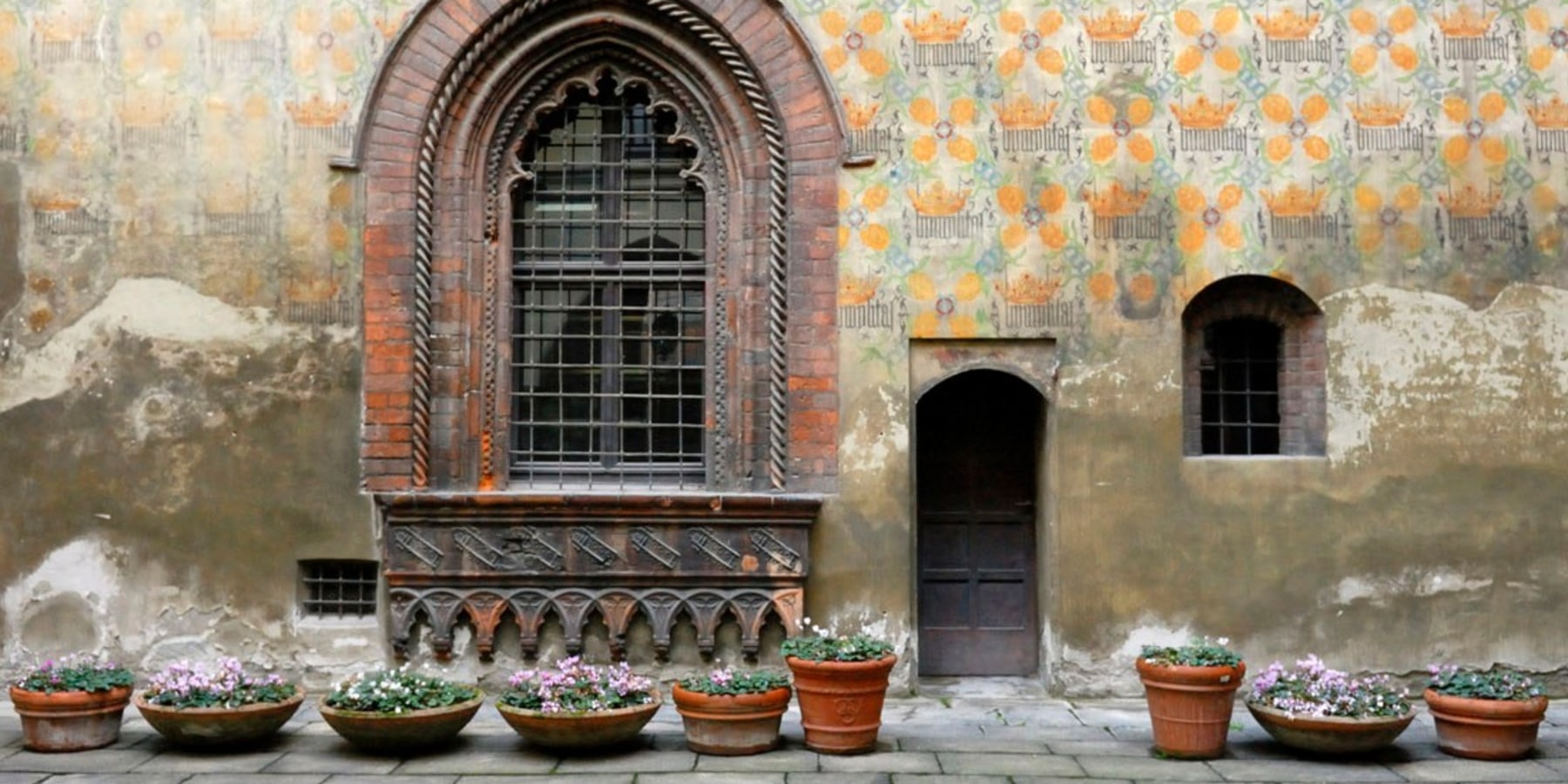
Doors and gates connect the inner and private space of a building with the external and public one. Walking around the city, you will find wonderful handcrafted iron gates and doors made of solid and precious wood. They often represent the entrance to ancient and sumptuous palaces, hiding beautiful gardens and courtyards. Some have been restored or replaced with modern doors, but the original ones must be seen. Some of them welcome people with good wishes; others have family emblems; others scare the traveller with awful monsters. They date back to different periods, and each has its own history and anecdotes. Here are some of the doors you can't miss!
The door of the house in Piazza Borromeo Borromeo 12 is one of the few examples of Gothic doors in Milan. The building dates back to the 13th century; it was raised by the Florentine Borromeo family, who moved to Milan. Above the pointed arch, you can see a crouched camel, the family emblem.
The portal of Palazzo Castani in Piazza San Sepolcro 9. Not centred on the facade, completely restored in the 15th century, it is the only part of the old structure. A Greek inscription wishes luck to those who enter, and a Latin one reminds us that the building has been erected for the well-being of its owners and the decorum of the city.
Corso Venezia is full of doors that enter aristocratic palaces. Visit the house at 52, with wooden doors and a pierced iron lunette. Do not miss even the one at no. 42 with Michelangelo and Leonardo's depictions. They seem to tell people that only geniuses live there!
Do come along to Corso Buenos Aires at no. 2 and 4 to admire the doors with monsters that spitfire. In Piazza Belgioioso, a side door of Alessandro Manzoni's house represents a delicate female hand made of bronze, originally that was used to knock at the door. You will find something similar via Baracchini no. 39, near Piazza Diaz: a childish hand owns a small ring on her finger. In Via Marsala, you can see Milan's narrowest and highest gate, with its old and toothless lion.
Do not miss, of course, the portals of the churches.
The Duomo has five portals in the front façade. The richest and most impressive is undoubtedly the central one, created by the sculptor Ludovico Pogliaghi who lived between ‘800 and ‘900. The panel on the left depicts painful episodes of the Virgin Mary and scenes from the Passion of Christ; the panel on the right depicts the happiness of motherhood.
Santa Maria Delle Grazie has a fifteenth-century door, made perhaps by Bramante, which stands for the white marble and the geometric nonlinearity on the simple structure of the Cotto tile facade.
The door of the Basilica of Sant'Ambrogio made of elm is one of the finest examples of Romanesque architecture in the Po Valley. Now, you can admire the copies of the early Christian panels with scenes taken from the life of David that should be read from bottom to top and from left to right.
Do not miss the church of San Sebastiano, via Torino, which was built by the governor of Milan, a certain Marquis Ayamonte, under the request of the curia of Milan in 1576 as a votive act for the plague. On the lintel of the door, there are some symbols of the martyrdom of the saint.
This is just an example of a tour in search of Milan's most interesting doors and portals. Let us know your preferences, and we will create a lovely walk just for you!

